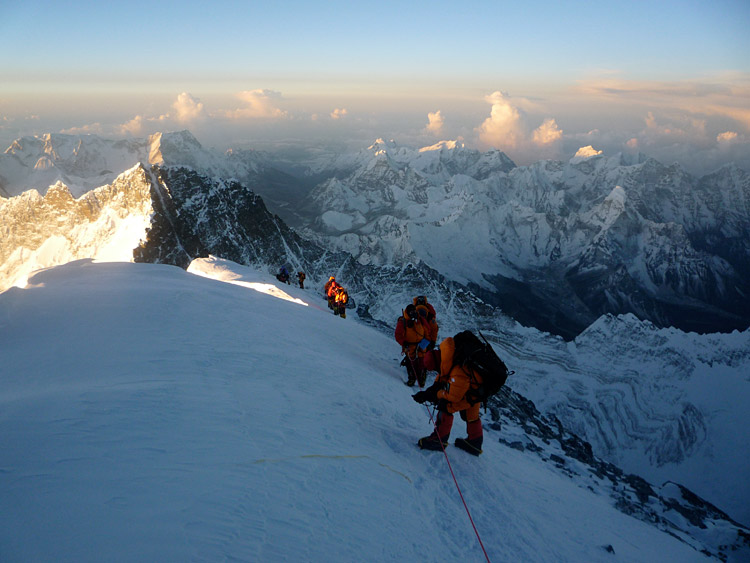There are few experiences in the known universe akin to exiting the safety and warmth of the International Space Station’s airlock and gracefully floating out into the pitch-black vacuum of space. After many months of intense training and great anticipation, not to mention the exhilaration of rocketing off of the planet in a space shuttle, you arrive at what is a defining moment in your life. You and your space- walking partner are alone in the void of space, reliant upon each other to accomplish a series of very difficult tasks and safely return in six-plus hours. You have crewmates inside the station and shuttle, and flight controllers with watchful eyes and helpful direction communicating from Mission Control Houston, but the ultimate responsibility for making a “round trip” outside falls upon you and your space-walking buddy. I’ve made seven such trips, which we call EVAs—short for Extravehicular Activity—and memories from each are forever etched in my mind. The butterflies—the commitment—are especially intense those first few minutes out the hatch, tempered only once we get to work in this rarefied world.
I guess I’ve always been driven to visit high, lofty places, and not just confined to aircraft and spacecraft. I began climbing in earnest in my teens, and after many hard-won summits, it was only natural to test myself on the world’s highest peak. I had the good fortune of spending a couple of seasons on Everest with Mike Hamill, climbing in parallel with him and his guided clients, and sharing the base camp support of the International Mountain Guides team. I remember having some great conversations with him in various camps along the way to the top of the world, including finding similarities between Himalayan mountaineering and EVA. Believe it or not, a summit day on Everest is a very close cousin to space walking, allowing me to touch the night sky.
I vividly recall the evening of May 20, 2009, poised to go into my wind-battered tent at 26,000-foot (7925 m) Camp IV. I’d been lying low since arrival at camp around 9:30 am, sucking down one and a half quarts (liters) a minute of supplemental oxygen, a few quarts of water, and an occasional ramen, thinking about the night ahead. Much like the pre-EVA jitters I’d experienced in the past, I wondered how my next twenty-four hours would unfold. Would I successfully summit? Success could only be measured as a complete round trip, so I wondered about the stability of the weather, the route, my health, my teammates (especially my friend and sidekick, Danuru Sherpa, from Phortse), and other elements beyond my control.
Bundled in a thick down suit, wearing a backpack containing my oxygen and emergency gear, I trundled out the vestibule of my tent at 8:00 pm that windblown night with just the illumination of my headlamp and a sliver of the moon. For all intents and purposes, I was exiting into the vacuum of space, since the air was almost as thin as “upstairs” outside the International Space Station. My thick mitts provided limited tactility, not dissimilar to my space-walking gloves, and I carefully hooked up to the fixed lines above the South Col, much as I’d done in space, hooking up a safety tether to prevent myself from “falling off ” my spacecraft—which would be a very bad day. My dream had been to arrive on the summit of Everest in time to see a sunrise, complete with the full curvature of Earth. I’d seen many orbital sunrises in space—we see sixteen every day while traveling at 17,500 miles per hour (28,000 kph) around the planet—but they happen almost in a blur. As my good fortune would have it, I arrived on the summit at 4:00 am, with the sunrise just beginning to peek up at 4:05 am. I was treated to the equivalent of an orbital sunrise from the top of the world, savoring the full spectrum of light as it rose behind the earth’s limn during my descent of the summit ridge, exhausted but elated. It remains the most magnificent sunrise of my life.
SCOTT PARAZYNSKI,
DOCTOR, NASA ASTRONAUT, AND CLIMBER
